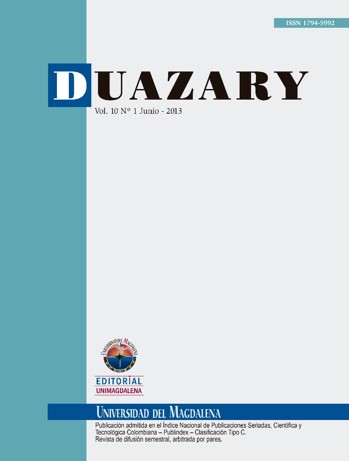Association between religiosity and depressive symptoms
Main Article Content
Abstract
Downloads
Article Details
References
Wong YJ, Rew L, Slaikeu KD. A systematic review of recent research on adolescent religiosity/spirituality and mental health. Issues Ment Health Nurs. 2006; 27: 161-183.
Cotton S, Zebracki K, Rosenthal S, Tsevat J, Drotar D. Religion/spirituality and adolescent health outcomes: a review. J Adolesc Health. 2006; 38: 472-480.
Ball J, Armistead L, Austin BJ. The relationship between religiosity and adjustment among African-American, female, urban adolescents. J Adolesc. 2003; 26: 431-446.
Pajević I, Sinanović O, Hasanović M. Religiosity and mental health. Psychiatr Dan. 2005; 17: 84-89.
Abdel-Khalek MA. Religiosity, subjective well-being, and depression in Saudi children and adolescents. Ment Health Relig Cult. 2009; 12: 803-815.
Cotton S, Larkin E, Hoopes A, Cromer BA, Rosenthal SL. The impact of adolescent spirituality on depressive symptoms and health risk behaviors. J Adolesc Health. 2005; 36: 529.e7 529.e14.
Schapman AM, Inderbitzen-Nolan HM. The role of religious behavior in adolescent depressive and anxious symptomatology. J Adolesc. 2002; 25: 631-643.
Sinha JW, Cnaan RA, Gelles RJ. Adolescent risk behaviors and religion: findings from a national study.J Adolesc. 2007; 30: 231-249.
Maharaj RG, Nunes P, Renwick S. Health risk behaviours among adolescents in the English-speaking Caribbean: a review. Child Adolesc Psychiatr Ment Health. 2009; 3: 10. doi:10.1186/1753-2000-3-10.
Florenzano R, Valdés M, Cáceres E, Santander S, Armijo I, Bergman V, et al. Religiousness, risk behaviors and mental health among adolescent from Santiago, Chile. Rev Chile Salud Publica. 2008; 12: 83-92.
Stewart SM, Betson CL, Lam TH, Chung SF, Ho HH, Chung TC. The correlates of depressed mood in adolescents in Hong Kong. J Adolesc Health. 1999; 25: 27-34.
Pérez JE, Little TD, Henrich CC. Spirituality and depressive symptoms in a school-based sample of adolescents: A longitudinal examination of mediated and moderated effects. J Adolesc Health. 2009; 44: 380-386. 13. Desrosiers A, Miller L. Relational spirituality and depression in adolescent girls. J Clin Psychol. 2007; 63: 1021-1037.
Pickett W, Molcho M, Simpson K, Janssen I, Kuntsche E, Mazur J, et al. Cross national study of injury and social determinants in adolescents. Injury Prev. 2005; 11: 213-218.
Wood D. Effect of child and family poverty on child health in the United States. Pediatrics. 2003; 112: 707-711.
Harpham T, Snoxell S, Grant E, Rodriguez C. Common mental disorders in a Young urban population in Colombia. Br J Psychiatry. 2005; 187: 161- 167.
Kim J. The protective effect of religiosity on maladjustment among maltreated and nonmaltreated children. Child Abuse Negl. 2008; 32: 711-720.
Frydenberg E, Lewis R, Kennedy G, Ardila R, Frindte W, Hannoun R. Coping with concern: an exploratory comparison of Australian, Colombian, German, and Palestinian adolescents. J Youth Adolesc. 2003; 32: 59-66.
Campo-Arias A, Oviedo HC, Cogollo Z. Internal consistency of a five-Item Form of the Francis Scale of Attitude Toward Christianity among adolescent students. J Soc Psychol. 2009; 149: 258-264.
Miranda-Tapia GA, Cogollo Z, Herazo E, Campo-Arias A. Stability of the Spanish version of the five item Francis scale of attitude toward Christianity. Psychol Report. 2010; 107, 949-952.
World Health Organization. Regional Office for Europe. Well-being measures in primary health care: The DepCare Project. Consensus meeting. Stockholm; 1998.
Smith TB, McCullough ME, Poll J. Religiousness and depression: Evidence for a main effect and the moderating influence of stressful life events. Psychol Bull. 2003; 129: 614-636.
Pearce MJ, Little TD, Perez JE. Religiousness and depressive symptoms among adolescents. J Clin Child Adolesc Psychol. 2003; 32: 267-276.
Pilgrim NA, Blum RW. Adolescent mental and physical health in the English-speaking Caribbean. Rev Panam Salud Publica. 2012; 32: 62-69.
Yonker JE, Schnalbelrauch CA, DeHaan LG. The relationship between spirituality and religiosity on psychological outcomes in adolescents and emerging adults: A meta-analytic review. J Adolesc. 2012; 35: 299-314.
Bonelli RM, Koenig HG. Mental disorders, religion and spirituality 1990 to 2010: A systematic evidence-based review. J Relig Health. 2013; 52: 657-673.
Miller L, Gur M. Religiosity, depression, and physical maturation in adolescent girls. J Am Acad Child Adolesc Psychiatry. 2002; 41: 206-214.
Miller L, Warner V, Wickramaratne P, Weismann M. Religiosity as a protective factor in depressive disorder (letter). Am J Psychiatry. 1999; 159: 808-809.
Slater W, Hall TW, Edwards KJ. Measuring religion and spirituality: Where are we and where are we going? J Psychol Theol. 2001; 29: 4-21.
Hill PC, Maltby LE. Measuring religiousness and spirituality: Issues, existing measures, and the implications for education and wellbeing. In: de Souza M, Francis LJ, O´Higgins-Norman J, Scott D. International handbook of education for spirituality, care and wellbeing. Netherland: Springer; 2009. p. 33-50.
Klein DN, Dougherty LR, Olino TM. Toward guidelines for evidence-based assessment of depression in children and adolescents. J Clin Child Adolesc Psychol. 2005; 34: 412-432.
Neymotin F, Downing-Matibag TM. Religiosity and adolescents’ involvement with both drugs and sex. J Relig Health. 2013; 52: 550-569.
Stice E, Ragan J, Randall P. Prospective relations between social support and depression: differential direction of effects for parent and peer support? J Abnorm Psychol. 2004; 113: 155-159.

